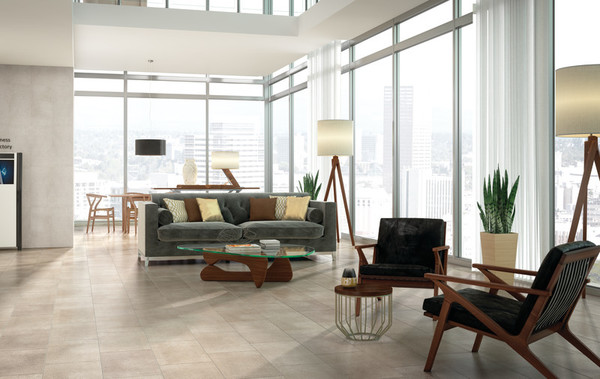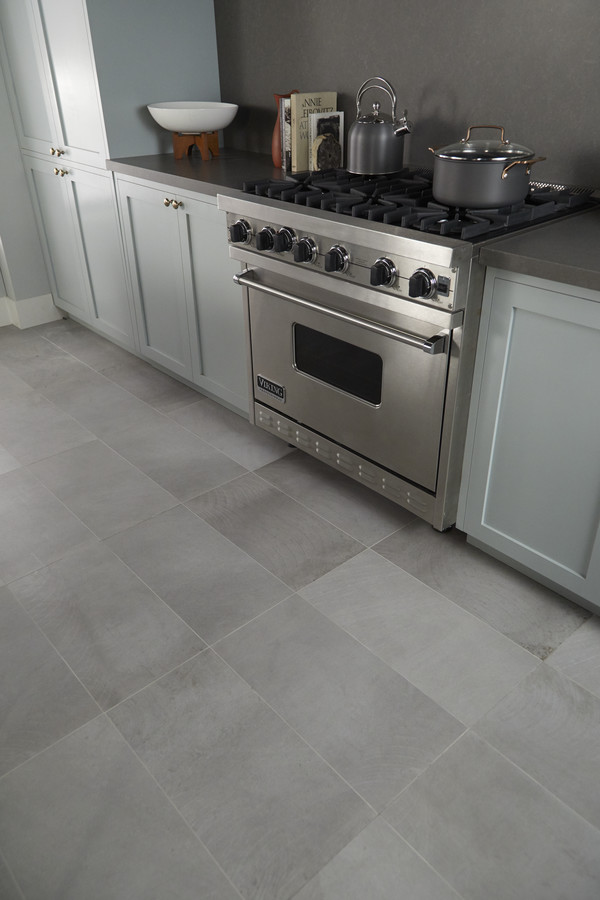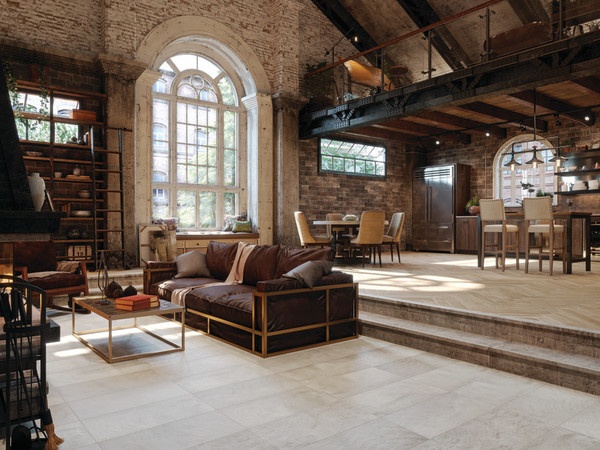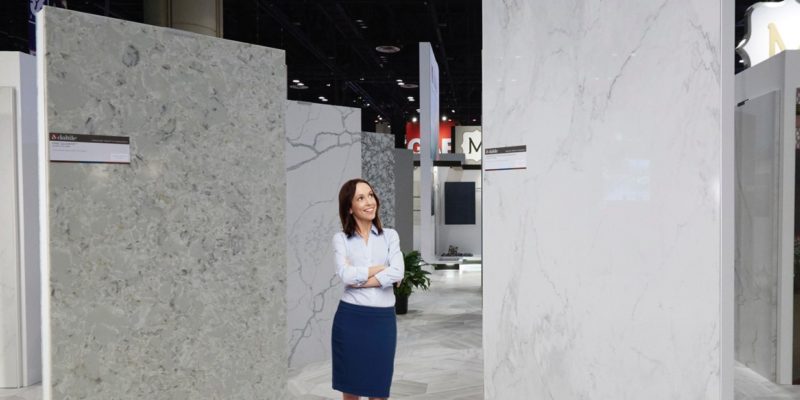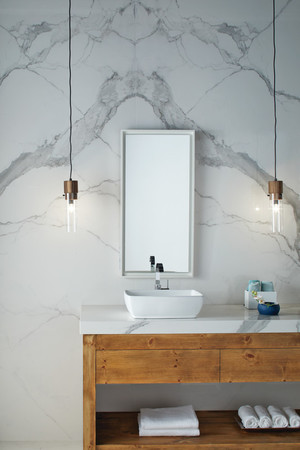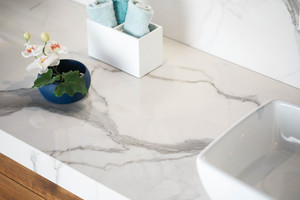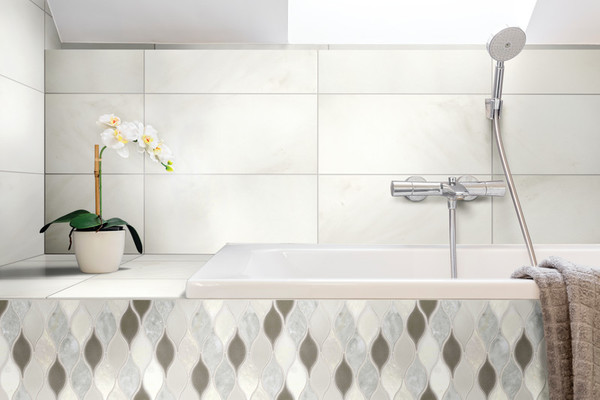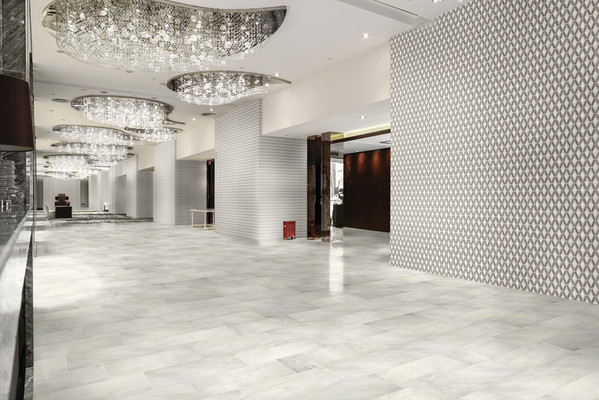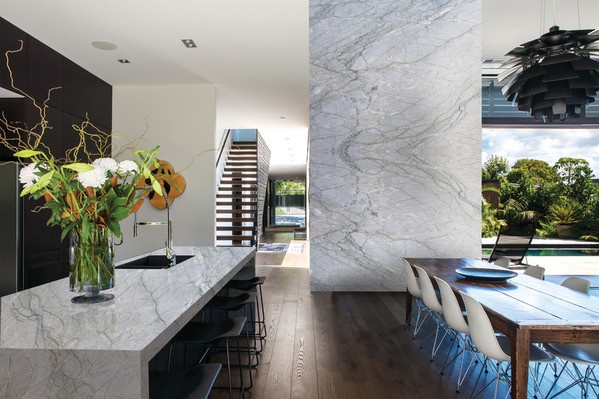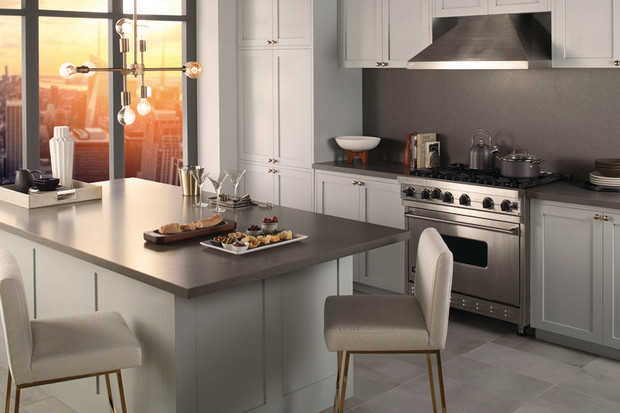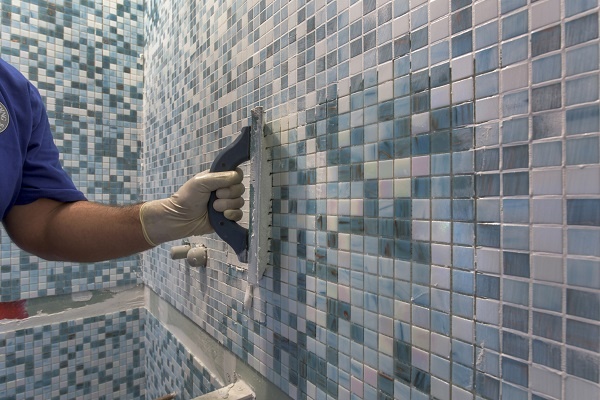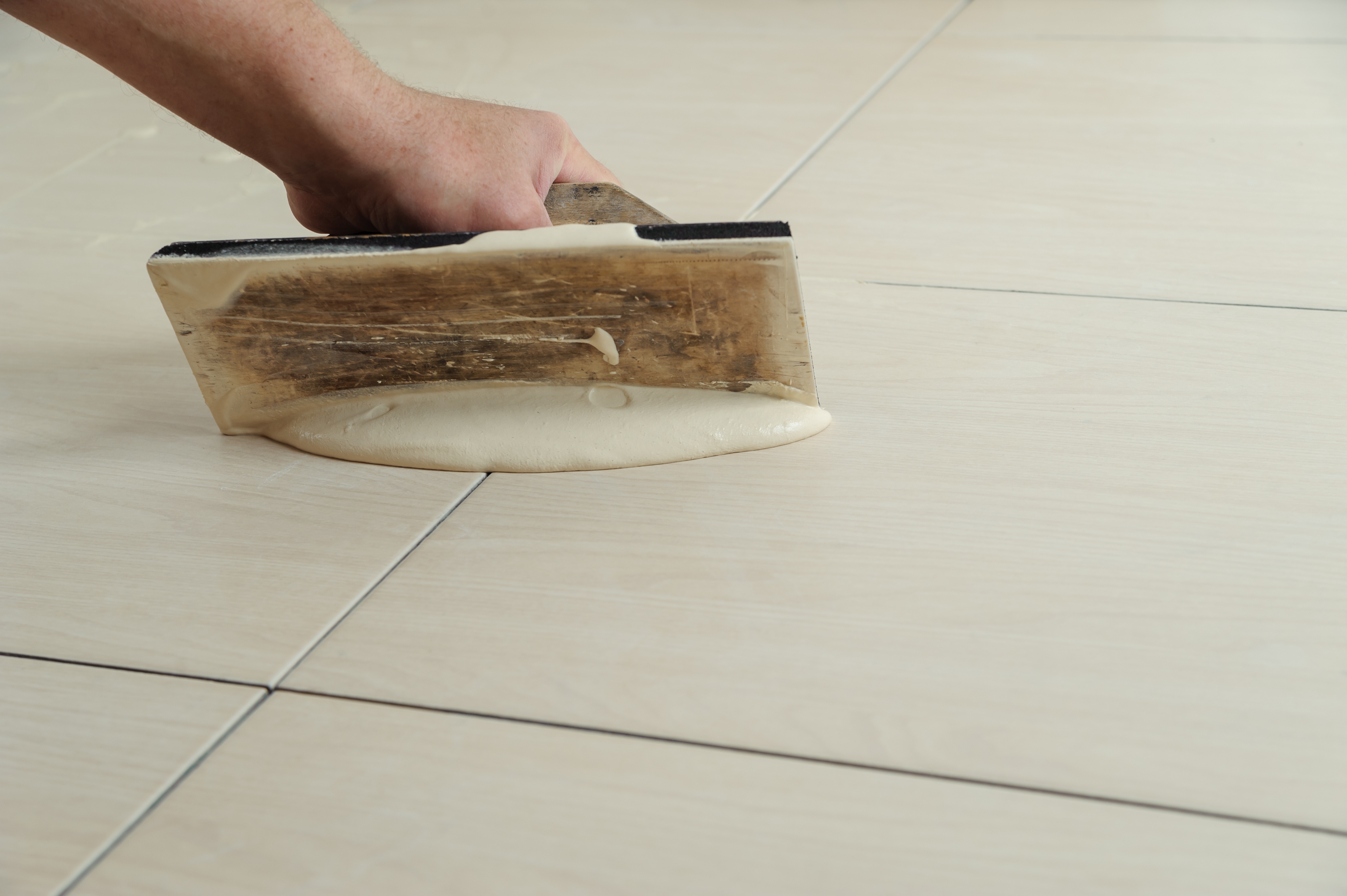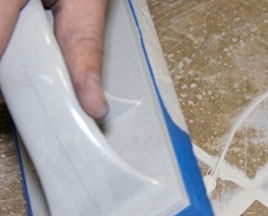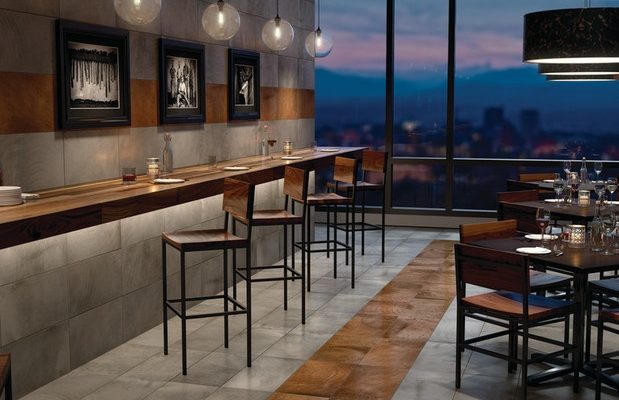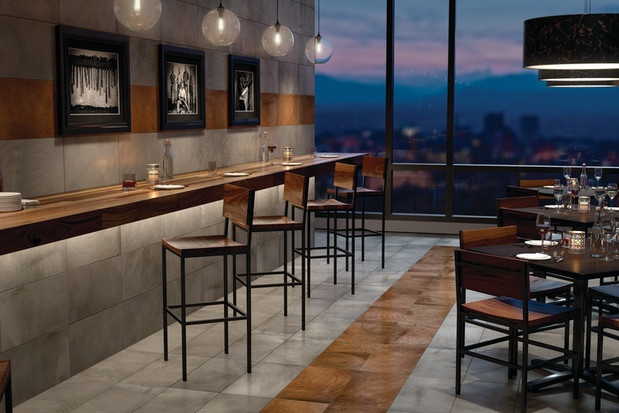Entries were judged by a panel of experts from the design industry on the design’s function, aesthetic, and the use of Daltile’s featured products. “We were so impressed by the creativity and innovation in the student submissions this year,” Shelly Halbert, director of product design at Dal-Tile, told Floor Covering Weekly at the awards ceremony held at the Daltile Design Studio in Philadelphia this week. “It [showcased] the amazing talent we can look forward to in the next generation of designers.”
This year’s grand prize winner is Baileigh Petty, an interior design student at Utah State University.
Petty designed a juice bar break room in the Booz Allen Hamilton space that emphasized health and wellness with easy access to fresh produce and a clean-lined, inspiring aesthetic. “I selected tile products and colors that were natural and included natural elements that would create an atmosphere of comfort and refreshment,” she told us.
Consideration for the Booz Allen Hamilton brand was also a top priority. “I took the brand colors and brand messages and integrated that into the design,” Petty says. Booz Allen Hamiltion is no stranger to creativity. The juice bar design is a reflection of the mission statements and focus of the Innovation Center-which is what makes this design such a great fit.

The future is bright for Petty who plans to pursue a career in commercial design after she has completed her final year at school. We look forward to what her career will offer the world of design.
The Daltile Philadelphia Design Studio hosted the awards event where Petty was presented with a scholarship check for $10,000 on behalf of Daltile, ASID, and Booz Allen Hamilton. She said, “this is a huge boost to my confidence as a soon-to-be professional in the design field and will give me a great start.”
Three runners-up were also announced at the ceremony. Brianne Brooks, Amanda McRae, and Sasitorn Wangspa recieved scholarships for their excellent designs. Additionally, a grant was awarded to the school with the most entries. Utah State University claimed that honor with 70 student entries.
We join with Daltile, ASID, and Booz Allen Hamilton in congratulating Baileigh Petty on her accomplishment and look forward to meeting more promising future designers next year.









